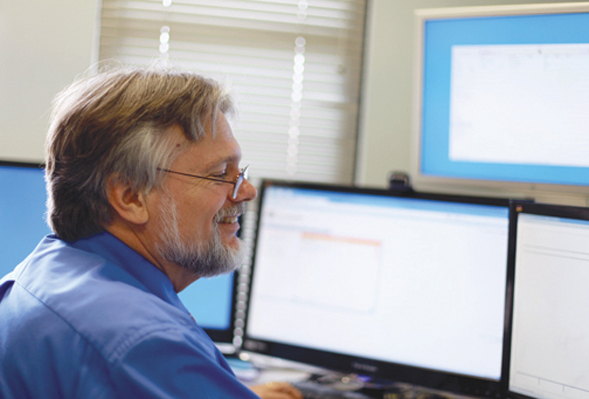Prof. Helps Kids Stay In School
Robert Briggs developed software aimed at decreasing drop-out rates in public schools.

Robert O. Briggs, management information systems professor at San Diego State University, didn’t set out to explore new ways to keep kids from dropping out of school.
“I was working with business and military organizations to reduce their project cycle times,” Briggs said. “As we explored theories on learning techniques and we found that we could cut their project cycle times by 90 percent while improving the quality of their work product.”
The focus of this research changed with a visit from a public school administrator from Washington, D.C. who asked if Briggs if he could apply the software to at-risk students in the D.C.’s public schools. At the time, the schools had a dropout rate of 64 percent. The team agreed to take the project.
Engaging students
At first, Briggs, who was raised in San Diego County and holds three degrees from SDSU (’86, art history, ’86, information systems, ’87, M.B.A.) had a difficult time grasping why at-risk learners were dropping out, until one student said:
“I got on the wrong side of a gang and I may not get home alive tonight. If I do get home alive, I don’t know whether my mom will be strung out on heroin. If she’s strung out on heroin, I don’t know whether I’ll have anything to eat until I get back to school on Monday. What do I care when Columbus sailed? What do I care what seven-times-five is? That has nothing to do with me.”
For Briggs, this was a “Eureka!” moment.
“When a learner has a stake in the outcome, learning feels like scratching an itch, but when they see no stake in the outcome, learning feels putting your face on a belt sander,” Briggs said.
“We had to stop preparing the kids for a future they didn’t believe in and put them to work on real goals where they had an immediate interest. We chose the tasks carefully so they would have to learn what we wanted them to know in order to get what they wanted.
“On one level, the study was a stunning success,” said Briggs. “During the two years that the students participated in the study, their reading and writing skills advanced two years ahead of their peers and their creative problem solving abilities were off the charts. We tracked them for five years and all 22 stayed in school, while more than half of their peers dropped out.”
Problem solving
But, Briggs said, “It was also a glorious failure. We couldn’t find a way to train the teachers on our approach . It was as if we handed the teachers surgical instruments and said ‘OK, you have the tools, now take out the appendix.’ But the tools were so new and complicated that we couldn’t even explain to each other what we were doing, much less to the teachers.”
Briggs went back to the drawing board and his further research led him to pioneer Collaboration Engineering, a new discipline focused on making benefits of these systems available to non-experts. He also invented new kind of collaboration software that he calls “ActionCenters. These are simple, yet effective applications that that non-experts can use with no training.
Now it’s back to school for the team as they head to Chicago to try ActionCenters on another class of at-risk students. “If the pilot project succeeds in Chicago, we’ll apply for grants to formally test the approach on a larger scale in other cities as well,” Briggs said.



